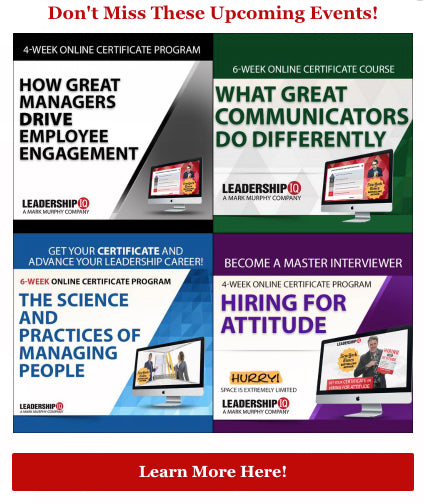How To Speak To Impatient People
Most people that seem impatient aren’t suffering from some chronic character flaw. Typically, they just have a particular communication style that likes things at a high level, without too much detail, and a focus on cutting-to-the-chase. And that describes a lot of C-level executives and especially CEOs.
#1: Seemingly Impatient People Have An Intuitive Communication Style
There are four distinct communication styles. And a lot of people who seem impatient have an Intuitive communication style. They want non-linear communications, which is a fancy way of saying they want you to get to the point quickly and without much emotion.
If you give an Intuitive communicator the bottom line, big picture view first to gain their buy-in, you’ve got a good shot at winning them over to hearing your other points. But if you’re someone who naturally gravitates towards process-driven, hyper-detailed communication (aka Functional communicators), you might make their head explode.
#2: Jump To The End
Here’s another way to think about Intuitive communicators. Imagine your Intuitive boss asks you for a movie recommendation. Imagine you choose Titanic since most folks have seen it, and we’re not risking any spoilers. There’s a high probability that the first thing she asks is, “How does the movie end?”
If you’re not an Intuitive communicator, you might be shocked and respond, “I can’t tell you that! It would ruin the whole thing!” But while knowing the ending might ruin the movie for you, the Intuitive person likely won’t watch it until they know the big picture (and that includes knowing the ending).
So, instead of saying, “I can’t tell you that it will ruin the movie” and then trying to persuade the boss to stream the movie (or approve your new project, idea, proposal, etc.) with a pile of details about the outstanding box office returns, the Academy Award nominations, the great acting, costumes and sets and all the rest, why not just give the boss the big picture information she wants. Tell her how the movie ends: “The boat sinks, and Leo dies.” It’s really that easy.
#3: Focus On Their Needs, NOT Yours
This isn’t about what you’d want to know or how you’d like to have it communicated to you. It’s about what the other person wants to know and how they want it communicated. Intuitive communicators really want to know how the movie ends. That big picture endpoint is what tells them whether or not they want to invest their time in watching the movie or listening to your proposal, or idea, or whatever.
The same rules apply when you’re making a business presentation. If you’re presenting to your impatient-seeming CEO, don’t start by describing 10 different options for improving your website, with plusses and minuses for each one. That’s a 30-minute presentation, and you’ll probably lose their attention after the first 5 minutes.
Instead say, “Over the next 90 days, we’re going to increase the conversions on our website by changing the copy and navigation. There are 10 steps, and I can give you a 1-sentence description of each one. And then, you can tell me which, if any, you’d like to explore in more detail.”
This gives the CEO the option of picking and choosing which options they do (and don’t) care about. Instead of eye rolls and sighs, you’re going to hear, “Tell me more about your plan for the navigation...” Because you started by cutting-to-the-chase, you’ll now get the chance to go back and give your detail while the CEO listens attentively.








